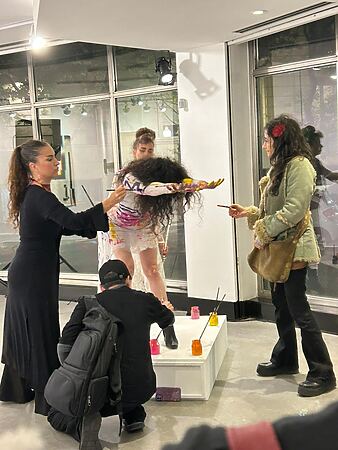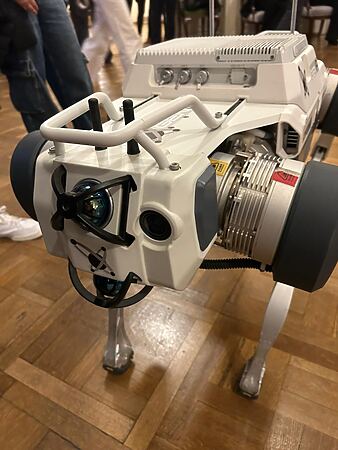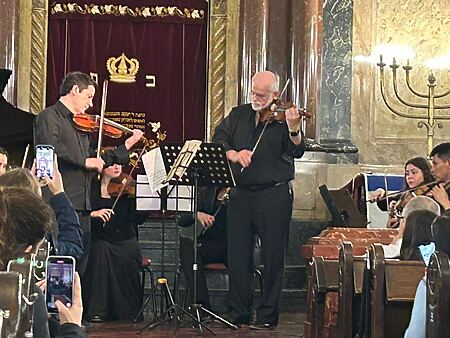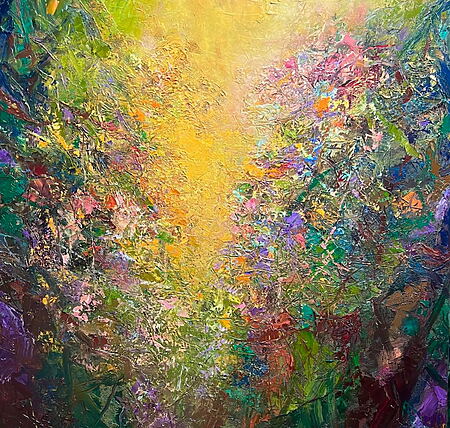The Long Night of Museums first took place in Berlin . The idea behind it was to give those who work during normal opening hours the opportunity to enjoy the city's cultural offerings once a year.
city partnership between Berlin and Buenos Aires, the event came to Argentina. In November 2004, 29 museums in Buenos Aires opened their doors free of charge from 7 pm to 2 am. The original goal was changed, as the museum was given new meaning through special exhibitions and interactive activities, transforming it into a vibrant venue that appealed to a younger audience.
Twenty-one years have passed since then, and on November 8, 2025, 300 cultural venues will open their doors. These include not only museums, but also art galleries, schools, and other facilities. To make access easier for those who don't live close to the attractions, the city offers a free city bus pass, which can be downloaded from the internet. During the event dates, the city can be explored free of charge.
The official opening of the event took place at the Recoleta Cultural Centre – CCR (Junín 1930) with the unveiling of a new sculpture by Marta Minujín (1943), a visual artist with a long career, known for her happenings in the 1970s.
She achieved worldwide recognition in 1983 with her Parthenon of Forbidden Books , an installation celebrating the return to democracy by distributing books that had been unavailable during the years of dictatorship. Specifically for the Night of Museums 2025, she conceived a Tower of Pisa made of pasta packages. A work as monumental as it was ephemeral, since visitors were allowed to take a package of pasta home with them.
This year I opted for a slightly different tour, seeking out new experiences in buildings not normally open to the public, and systematically avoiding museums. I invite you to join me on this unique walk through the city.
I began my tour at the city's oldest language school, the IES Juan Ramón Fernández , known to everyone as " Lenguas Vivas " (Carlos Pellegrini 1515). In the beautiful courtyard, which has steps like an amphitheater, a modest stage had been set up where teachers and friends sang, using various languages.
The German teachers set up tables with games where both experts and curious newcomers could demonstrate their ingenuity to test and expand their German skills. In the lab on the first floor, the film Undine by Christian Petzold and the poem Undine geht by Ingeborg Bachmann served as a starting point for discussing the portrayal of the mythical figure of Undine.
Excerpts from the film were analyzed, and Bachmann was read aloud by the choir, along with the corresponding translation prepared by the institute's students. It was an excellent start.

Lenguas building is the OSdE Foundation art space (Arroyo 807), which recently opened on the ground floor of a modernist building from the 1930s.
In addition to the award-winning works of the 6th edition of the Argentine Prize for Fine Arts of the Foundation, a performance directed by the actress and dancer Leticia Mazur (1978) about the body of a young singer, Clara Trucco, better known as Wen , could be seen.
The overall concept was reminiscent of Marina Abramovic 's performances and body art . The young woman, dressed entirely in white, assumed various poses and invited the audience to "decorate" her with the provided brushes and paints. Many visitors enthusiastically participated, indiscriminately painting fabric and body. The show lasted several minutes.
My next stop was the Argentine Engineering Center (Centro Argentino de Ingenieros ), a place that rarely opens its doors to the public (Cerrito 1250). According to the program, a model of the building and some oil paintings were on display, and Charles Chaplin's classic film The Circus shown.

The most impressive part, however, was the welcome in the entrance hall. As visitors ascended the stairs, they encountered a friendly four-legged robot.
Originally designed for industrial inspection, this robot can be operated manually or programmed to move autonomously using its sensors. The robot can lower its center of gravity to easily ascend or descend stairs, and its agility allows it to navigate uneven terrain with ease.
Robots have the ability to connect us with our inner child; they awaken curiosity and a strange joy within us. The people gathered in the large conference hall, decorated with photos of the country's most distinguished engineers, watched their movements with fascination.
As I was on my way to my next destination, something unexpected happened. I wanted to see how many people the Colón Theater – Teatro Colón – (Libertad 631), the city's main opera house, had attracted, but as I crossed Córdoba Avenue, I was surprised to see that the Libertad Synagogue – Templo Libertad , the oldest synagogue of the Jewish community of Buenos Aires, was open.

Construction began in 1897 and lasted almost 40 years. The architecture is influenced by both Romanesque and Byzantine styles and houses one of the few Walcker organs to have survived World War II. I was not only able to enter, but also Johann Sebastian Bach 's Concerto for Two Violins , performed by the youth orchestra with the participation of the first violinist of the Colón Teatro's resident orchestra. A true luxury.
maestro played a work by the brilliant tango composer Astor Piazzolla . The synagogue offers a Concierto en Libertad (Concert in Freedom) every Wednesday at noon, in obvious reference to the name of the temple, which was built on Libertad Street (Libertad 769), but until now I had never been able to attend one.
As expected, more than a hundred people gathered around the Colón Theater and waited patiently to be allowed in. The night was warm, and the large number of people in the streets suggested it was much earlier, but it was already almost midnight.
I decided to visit another mysterious place in the metropolis. The building of the Grand Lodge of Freemasons of Argentina , also known as the Cangallo Palace – Palacio Cangallo , is impressive in itself (Perón 1242).

Freemasonry has a long history in this country, its origins dating back to 1857. It is said that the father of the nation and liberator of the Americas , General José de San Martín , was a member. Numerous lodge members were active on the streets, helping people to organize themselves.
Others explained the symbolism and traditions within the temple itself. All wore striking T-shirts bearing the lodge's symbol and greeted visitors warmly. When I arrived, a group of musicians was singing opera arias in the spacious assembly hall on the first floor. In December, Beethoven's Ninth Symphony be performed in the same space in a large, public concert featuring a substantial choir.
What impressed me most were the female Freemasons, who, adorned with all their jewelry and insignia, walked along the line of visitors, telling them about the women's branch of the lodge. It's astonishing that after so much secrecy, they now present themselves so openly.
Congress Square – Plaza del Congreso – shortly after 1 a.m. Irigoyen Street was blocked Bibliomóvil Bibliomóvil is a double-decker bus equipped with computers and more than 5,000 books. Small tables with books and games were set up around it.
The children shot toy arrows and colored pictures from their favorite books. The adults could tour the storage rooms and gain access to the special collections or try their hand at lithography. I opted for the latter and happily went home with a green print of the Congress building as a memento of this edition of Museum Night.
I hope you enjoyed this tour and that you will keep an eye out for future issues if you are in Buenos Aires in early November.

Laura Ragucci is a multifaceted artist who works as an art critic, teacher, artist, and photographer. Her passion for art and culture is enriched by her extensive travel experiences, which have allowed her to integrate diverse cultural influences into her work.
After years of studying languages and working with computer science, she turned to creative expression through photography and writing. Since 2020, she has devoted herself primarily to art criticism, drawing on her studies at the National University of Art (UNA).
She writes her art reviews purely for the joy of artistic discourse. Laura embodies the spirit of a tireless explorer whose curiosity has led her down diverse paths.

















